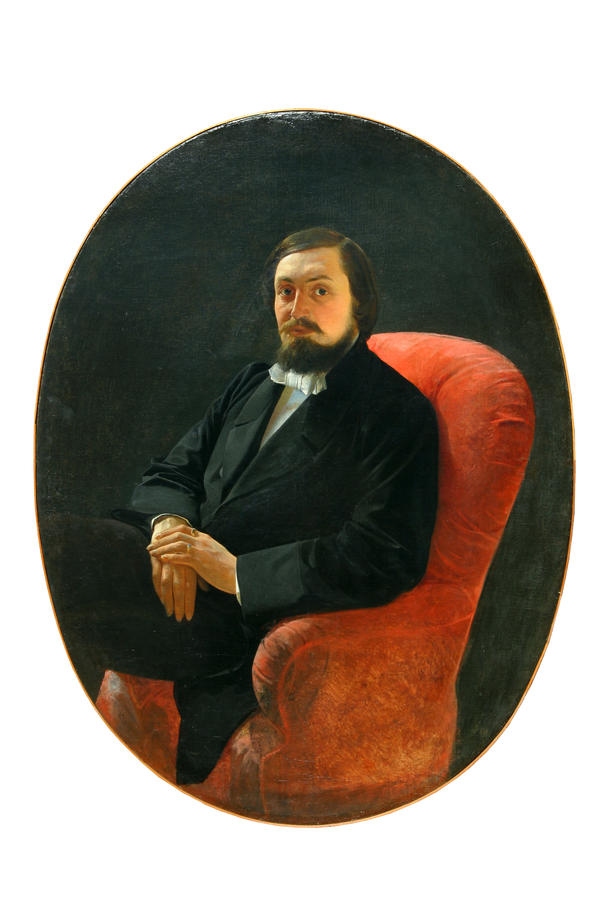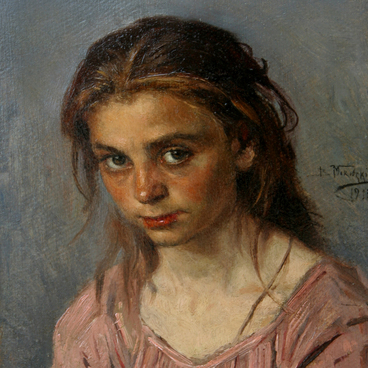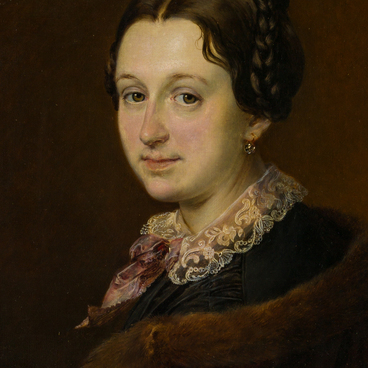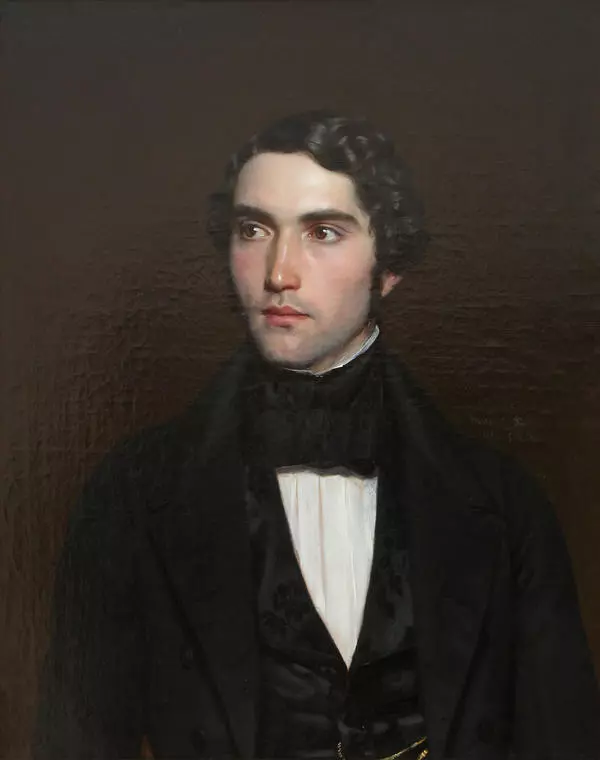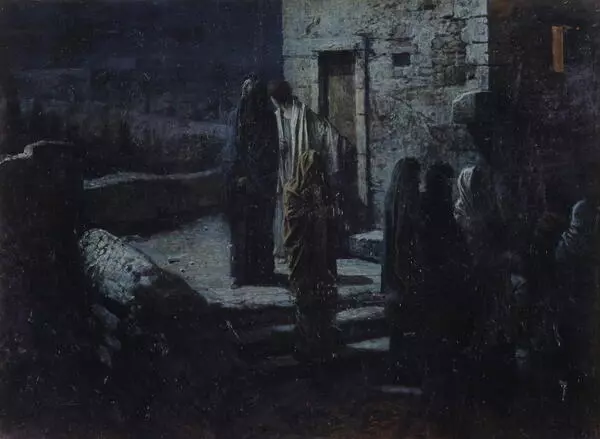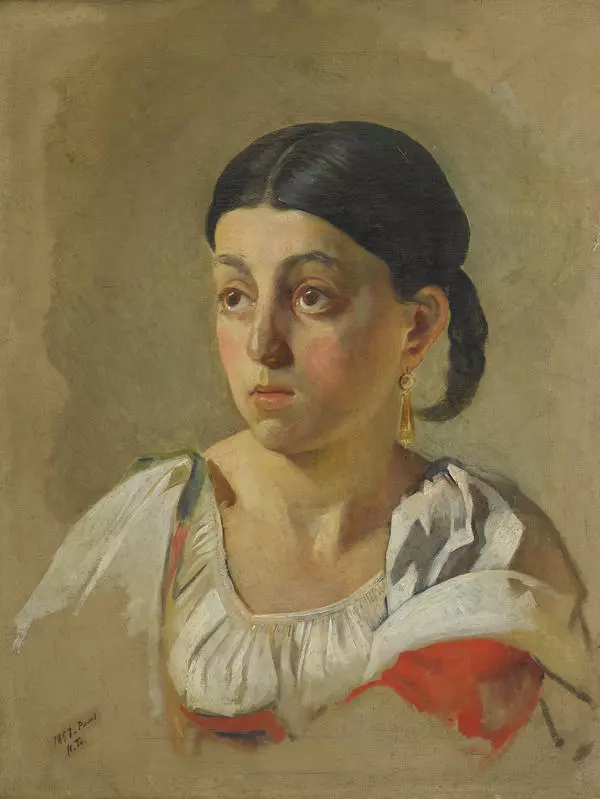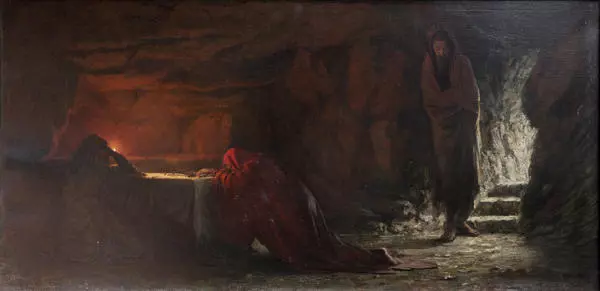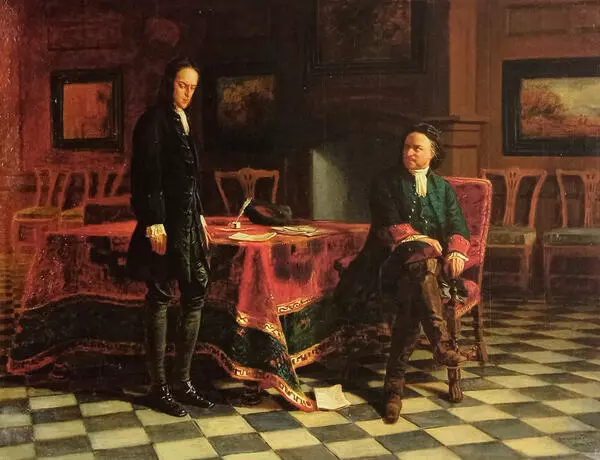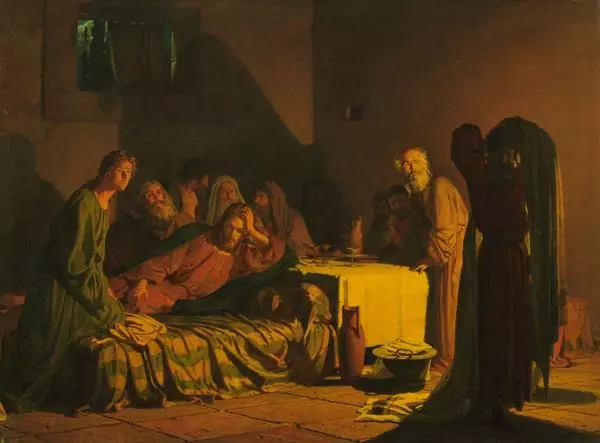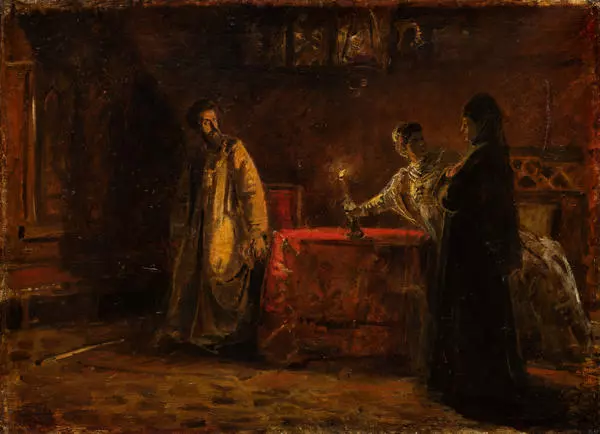In late 1850s – early 1860s, Russian art witnessed another turn. At that point, changes were caused by the process of liberalization of popular mentality that resulted from the dramatic change of social and political situation.
Key subject matters of art at that time became the human life, demonstration of social injustice, natural charm of the native land. Such a range of subjects results in simultaneous development of all the movements in painting: the portrait, the landscape, genre pictures.
Human spirituality, individuality, dignity and moral stature are main ideas of the works by Russian portrait painters who collaborated with the Association of Itinerant Art Exhibitions. That organization appeared in 1863 after the famous ‘Uprising of the Fourteen’ and was engaged in organizing exhibitions up to 1923. The Association of Itinerants united many progressively-minded painters who pursued the ideas of realism and national spirit in their works.
One of the founders of the organization was Nikolay Nikolayevich Ghe, born in 1831. He gained wide popularity due to his series of Evangelical paintings. The painter contributed a lot to the genre of the realistic portrait of the 19th century and created a number of paintings in that genre.
In his Portrait of Doctor Krause, Nikolay Ghe represented an intellectual with rich inner world. Wilhelm Krause, whose dates of birth and death are unknown, was an outstanding surgeon, one of the ascendants of a whole family of German medical professionals. The painter got acquainted with him in Florence, where he lived starting from 1860 after having moved from Rome. It was then that he painted the doctor’s portrait.
The style of the portrait resembles that of works by Karl Bryullov. His paintings are also distinguished by special coloration based on the contrast of intense red and black colors, energetic accentuation of hands and faces with light.
Russian Orthodox-theme paintings by Nikolay Ghe, unlike his other works, were not welcomed by viewers due to specificity of the former. The painter died in 1894 when his works were persecuted by art critics. Nevertheless, being very much under influence of Leo Tolstoy’s doctrine, the painter had no issue with public resentment.
The Portrait of Doctor Krause has been kept in the collection of the Bashkortostan Art Museum since 1929. It was transferred from the State Russian Museum, alongside with other pictures, due to efforts by Mikhail Vasilyevich Nesterov who committed to replenishment of the museum collection.
Key subject matters of art at that time became the human life, demonstration of social injustice, natural charm of the native land. Such a range of subjects results in simultaneous development of all the movements in painting: the portrait, the landscape, genre pictures.
Human spirituality, individuality, dignity and moral stature are main ideas of the works by Russian portrait painters who collaborated with the Association of Itinerant Art Exhibitions. That organization appeared in 1863 after the famous ‘Uprising of the Fourteen’ and was engaged in organizing exhibitions up to 1923. The Association of Itinerants united many progressively-minded painters who pursued the ideas of realism and national spirit in their works.
One of the founders of the organization was Nikolay Nikolayevich Ghe, born in 1831. He gained wide popularity due to his series of Evangelical paintings. The painter contributed a lot to the genre of the realistic portrait of the 19th century and created a number of paintings in that genre.
In his Portrait of Doctor Krause, Nikolay Ghe represented an intellectual with rich inner world. Wilhelm Krause, whose dates of birth and death are unknown, was an outstanding surgeon, one of the ascendants of a whole family of German medical professionals. The painter got acquainted with him in Florence, where he lived starting from 1860 after having moved from Rome. It was then that he painted the doctor’s portrait.
The style of the portrait resembles that of works by Karl Bryullov. His paintings are also distinguished by special coloration based on the contrast of intense red and black colors, energetic accentuation of hands and faces with light.
Russian Orthodox-theme paintings by Nikolay Ghe, unlike his other works, were not welcomed by viewers due to specificity of the former. The painter died in 1894 when his works were persecuted by art critics. Nevertheless, being very much under influence of Leo Tolstoy’s doctrine, the painter had no issue with public resentment.
The Portrait of Doctor Krause has been kept in the collection of the Bashkortostan Art Museum since 1929. It was transferred from the State Russian Museum, alongside with other pictures, due to efforts by Mikhail Vasilyevich Nesterov who committed to replenishment of the museum collection.

